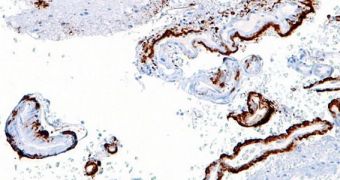Knowing in advance which of the patients suffering from conditions such as mild cognitive impairment (MCI) will go on to develop Alzheimer's disease would be an incredible advantage for doctors. A newly developed radioactive dye holds the promise of making this capability a reality.
The compound is capable of revealing the earliest signs of Alzheimer's, when injected into a suspected patient's brain. Duke University Medical Center investigators say that they can use these readings to predict future brain decline in at-risk individuals, Science Blog reports.
In a paper published in the latest issue of the esteemed journal Neurology, the team explains that as 5.4 million people suffer from Alzheimer's in the US alone, and that the number is bound to increase significantly over the next few years.
The researchers add that the new radioactive dye could be made part of a comprehensive, early-detection tool kit against this neurodegenerative form of dementia. This will enable doctors to detect the condition before it becomes too severe, and will lower overall healthcare costs.

 14 DAY TRIAL //
14 DAY TRIAL //